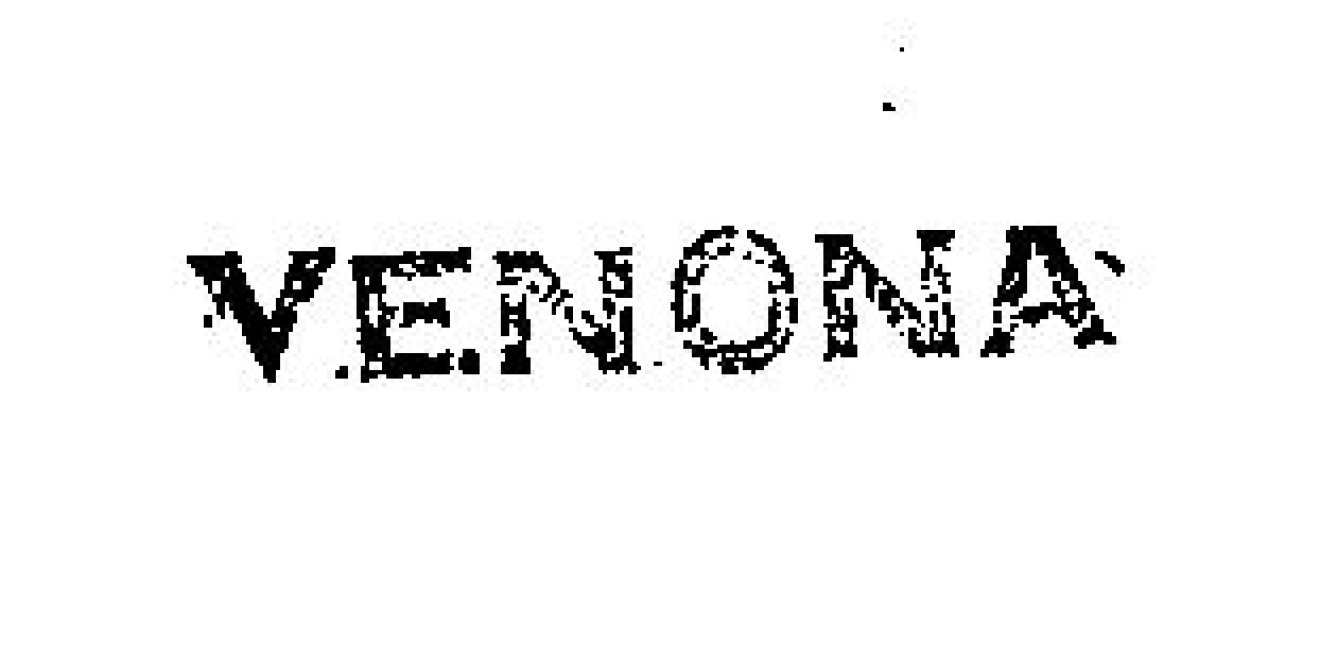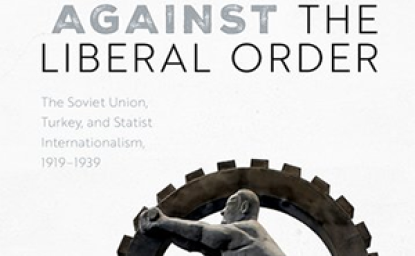This index and concordance indexes twenty-one volumes of KGB archival material: nine notebooks written by Alexander Vassiliev and twelve compilations of the Soviet international telegraphic cables deciphered by the US National Security Agency’s Venona project. Indexed are proper names, cover names, and organizational titles along with some geographic entities, events, diplomatic conferences, and subjects. When known, cover names are cross-indexed with the real name behind the cover name. Brief biographical or explanatory information is provided for significant figures, tradecraft terminology is defined, and obscure abbreviations expanded.
Alexander Vassiliev’s notebooks
The original Vassiliev notebooks, handwritten in Russian, are held in the Manuscript Division of the Library of Congress.[1] Scanned versions of the notebooks along with transcriptions into word-processed Cyrillic Russian and translations into English are available on the CWIHP Digital Archive. All three versions have identical pagination. The Russian transcriptions and the English translations are electronically searchable. This index/concordance indexes the English translations.
The Venona Decryptions
More than three thousands telegraphic cables between Soviet institutions in Moscow and their subordinate stations around the world were deciphered by the US National Security Agency in a project entitled Venona.[1] The earliest cables dated from 1941 and the latest to 1950. Most were from the period 1943 to 1945. The project started in 1943, decoded its first cable in 1946, and continued until NSA shut down the project in 1980 when it judged the remaining cables vulnerable to decryption, almost all from the early 1940s, were too old to be of any current intelligence interest. While cables from Soviet stations in sixteen nations were deciphered, the great majority were between Moscow and its stations in the United States.
When the National Security Agency released the decryptions in the mid-1990s it released them as photocopies of the deciphered cables translated into English and typed on the manual typewriters used by NSA cryptanalysts the 1940–1980 period. Later it scanned the photocopies and placed them on the web. The scanned decryptions on the web are images and while they can be downloaded and printed, they cannot be electronically searched. The decryptions are on the web in chronological order with cables between Moscow and the different field stations and agencies mixed together. There is no index or table of contents. This makes it very difficult for anyone except a specialist to find the particular cable that may be relevant to their interest. The more than 3,000 cables amount to more than 5,000 pages of material. Some are also difficult to read because of the age of the original manually typed document. If one is looking for cables that mention a particular person, the only way to be sure that one has located them all is to read all 5,000 plus pages. Further, many of the persons discussed in the cables are there only under a cover name, and one needs to know the cover name and keep in mind that cover names are changed from time to time and some cover names are reused and may apply to an entirely different person. Consequently, knowledge of these changes is necessary to accurate locate the cables where the person of interest is discussed.
One of the major barriers to use of the Venona decryptions was the lack of the availability of them in electronic format so that names or other terms could be electronically searched. Under the direction of Robert J. Heibel, Executive Director of the Institute of Intelligence Studies at Mercyhurst College in Erie, PA, students of the Institute over many years transcribed the photocopies into Microsoft Word files. Researchers are much in debt to the students of the Institute of Intelligence Studies for undertaking this task. In 2009 Director Heibel gave a set of these transcriptions to John Earl Haynes, modern political historian in the Manuscript Division of the Library of Congress. Dr. Haynes, then starting a year-long research fellowship at the Library’s John W. Kluge Center, undertook a project to create this combined index and concordance to both the Alexander Vassiliev notebooks and the cables decoded by the Venona project.
To facilitate access, the more than 3,000 cables are compiled into forty-five volumes according to what Soviet agency was involved and the location of the field station that send or received the cables. This creation of artificial books also creates page numbers that facilitates indexing and makes moving from the index entry to the actual cable easy. The transcriptions are highly accurate, but occasional typos occur and some words on the original are difficult to read. Dr. Haynes in the process of indexing corrected typos that occurred in index items, but not for non-index words. Anyone wishing to check the transcription against the scan of the original can go to NSA’s Venona site and locate the image of the original cable by the date.
Only the cables between Moscow and its American stations (which includes most of the cables decoded) are completely indexed. These Moscow-USA cables are compiled into twelve volumes:
Venona New York KGB 1941-42 [ PDF, 109.31 KB]
PDF, 109.31 KB]
Venona New York KGB 1944 [ PDF, 1.06 MB]
PDF, 1.06 MB]
Venona New York/Buenos Aires Secret Writings [ PDF, 27.49 KB]
PDF, 27.49 KB]
While they are not indexed, the non-USA Venona cables have been transcribed into electronic format, compiled into thirty-three volumes, and are electronically searchable. The unindexed volumes are:
Venona Addis Ababa Diplomatic [ PDF, 5.83 KB]
PDF, 5.83 KB]
Venona Ankara Diplomatic [ PDF, 6.52 KB]
PDF, 6.52 KB]
Venona Bogota Diplomatic [ PDF, 8.8 KB]
PDF, 8.8 KB]
Venona Capetown Diplomatic [ PDF, 5.68 KB]
PDF, 5.68 KB]
Venona Harbin Diplomatic [ PDF, 11.67 KB]
PDF, 11.67 KB]
Venona Havana Diplomatic [ PDF, 9.77 KB3]
PDF, 9.77 KB3]
Venona Kazvin Diplomatic [ PDF, 5.98 KB]
PDF, 5.98 KB]
Venona Meshed Diplomatic [ PDF, 6.2 KB]
PDF, 6.2 KB]
Venona Montevideo Diplomatic [ PDF, 18.71 KB]
PDF, 18.71 KB]
Venona Ottawa Diplomatic [ PDF, 8.96 KB]
PDF, 8.96 KB]
Venona Stockholm Diplomatic [ PDF, 22.74 KB]
PDF, 22.74 KB]
Venona Stockholm Naval GRU [ PDF, 308.45 KB]
PDF, 308.45 KB]
[1]. For the background of composition of the notebooks, see: John Earl Haynes, Harvey Klehr, and Alexander Vassiliev, Spies: The Rise and Fall of the KGB in America (New Haven: Yale University Press, 2009), ix-liii.
[2]. For the background of the Venona project, see; Robert Louis Benson and Michael Warner, Venona: Soviet Espionage and the American Response 1939–1957 (Washington, D.C.: National Security Agency; Central Intelligence Agency, 1996), vii-xliv; Robert L. Benson, The Venona Story (Ft. Meade, MD: Center for Cryptologic History, National Security Agency, 2001); and John Earl Haynes and Harvey Klehr, Venona: Decoding Soviet Espionage in America (New Haven, CT: Yale University Press [Nota Bene], 2000), 8–56.





